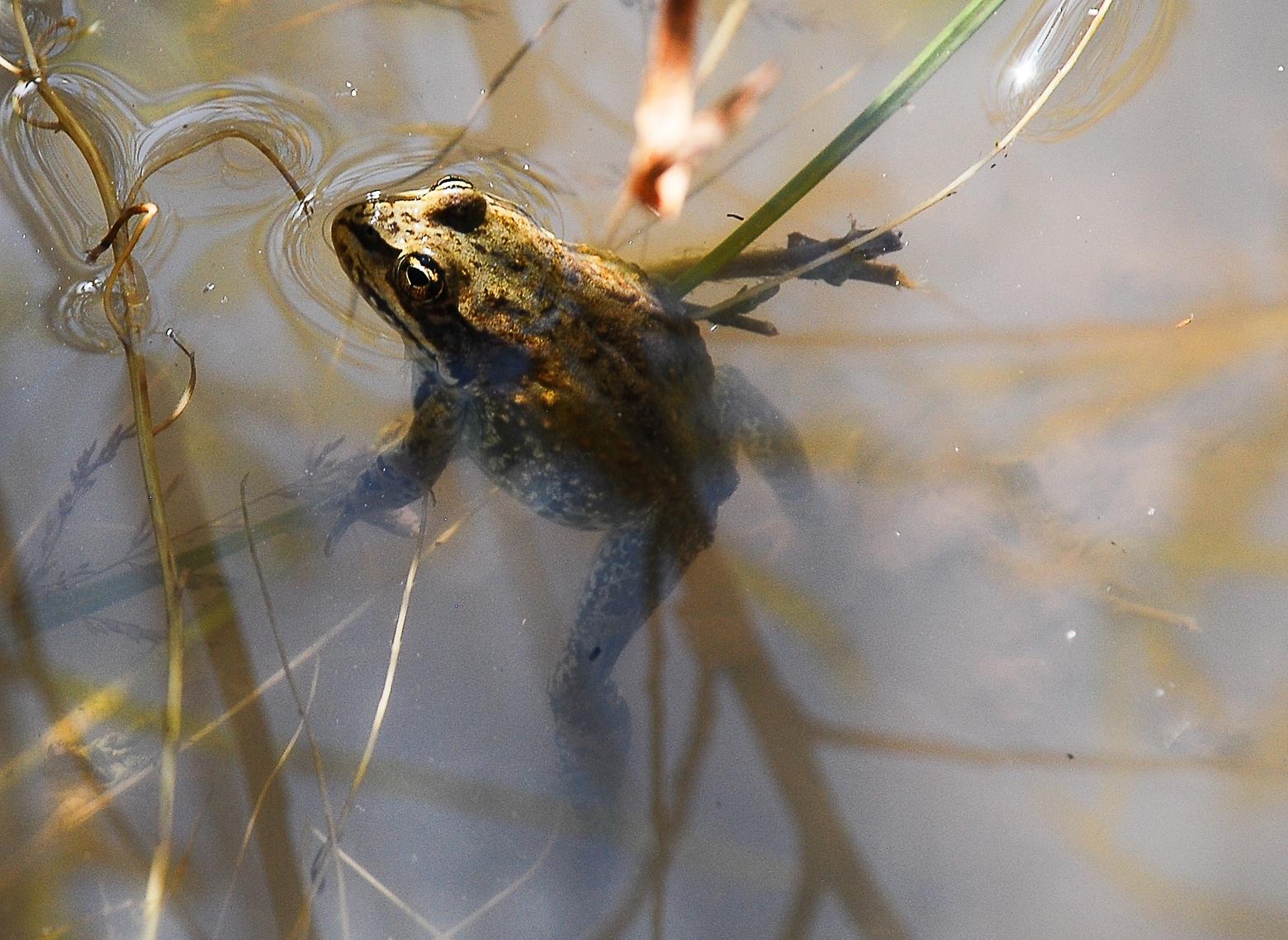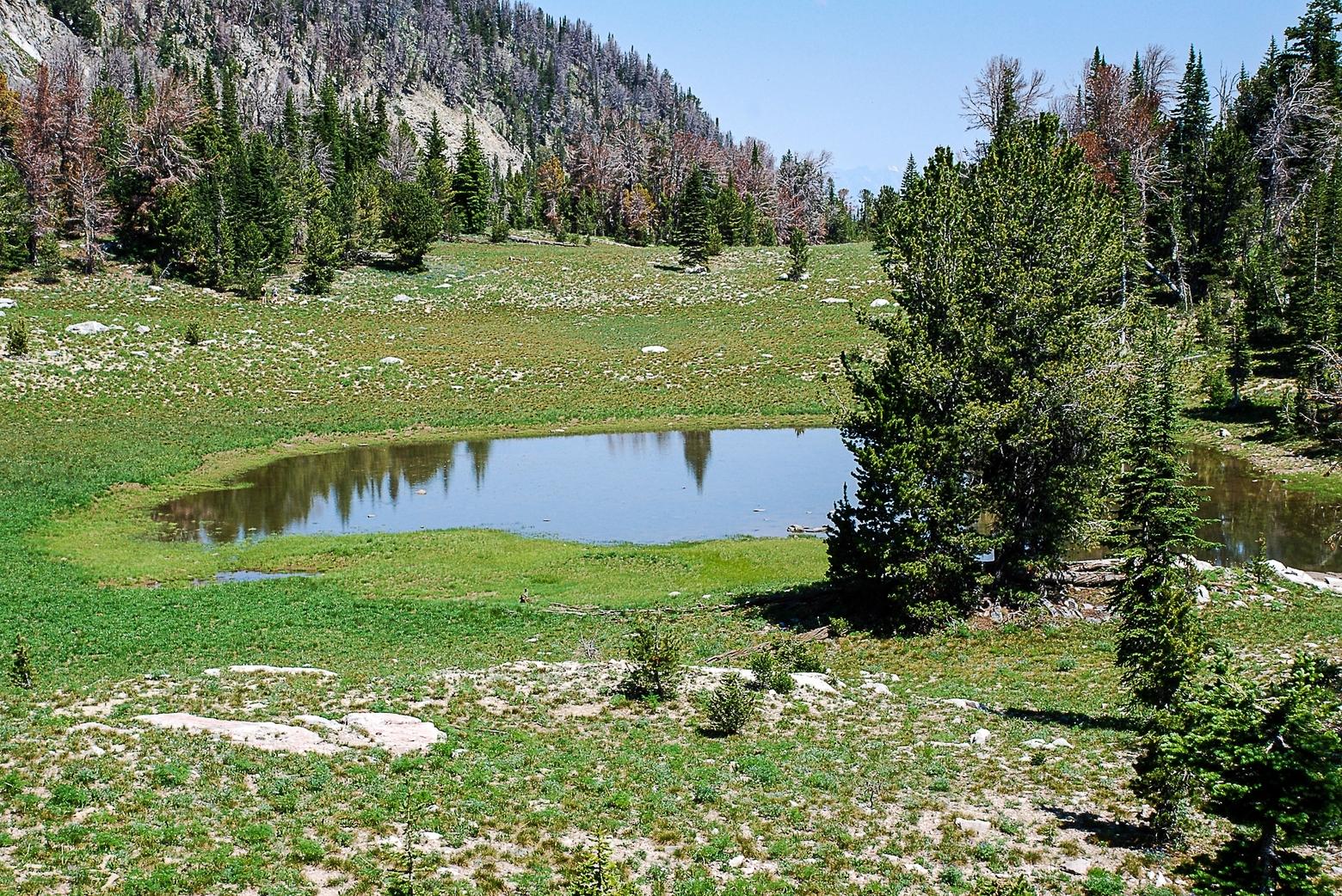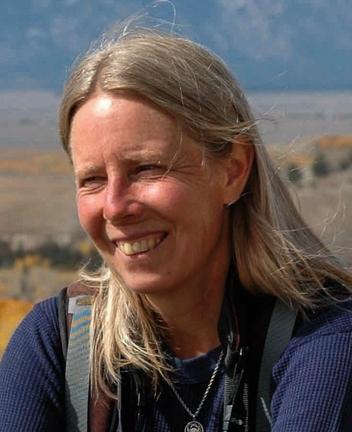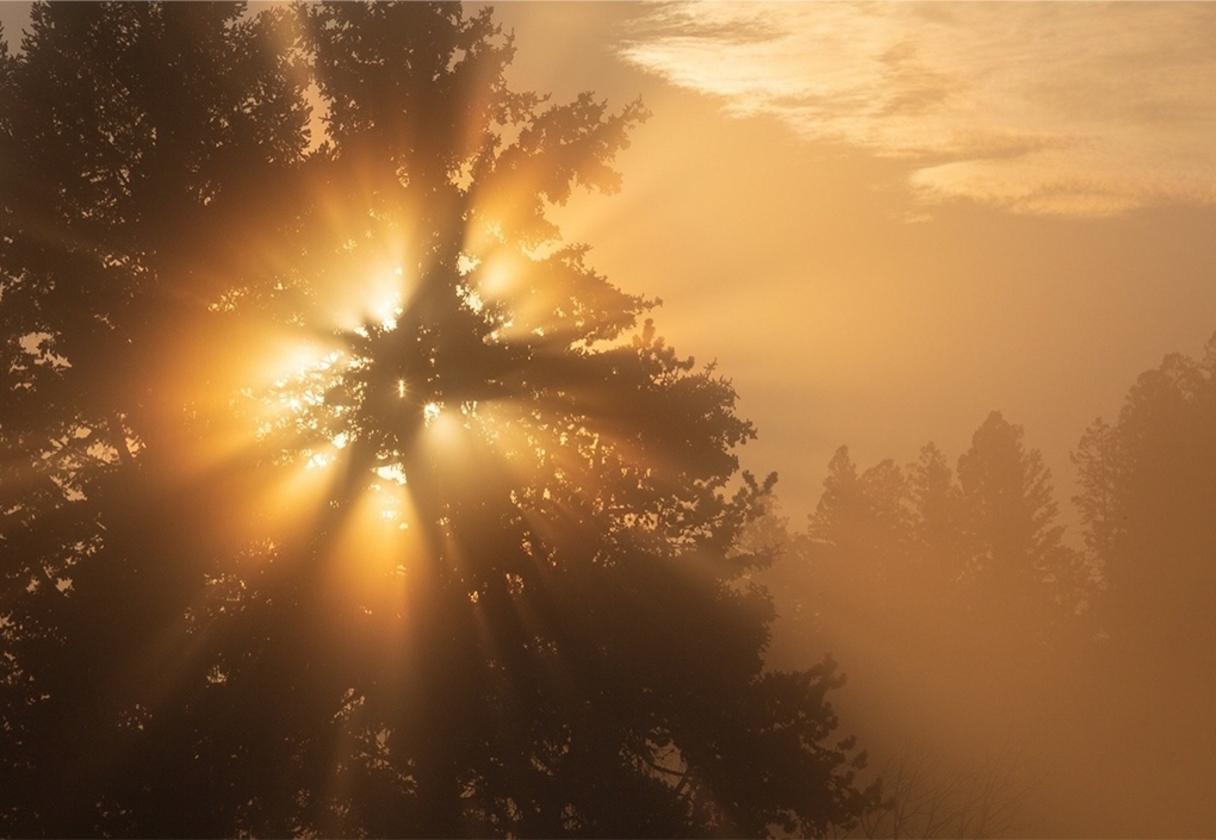Back to StoriesA Three-Frog Summer
June 16, 2025
A Three-Frog SummerSusan Marsh peers into the future by witnessing the present and recalling the magic of the past
Column and photos by Susan Marsh
I
enjoy tramping in the mountains solo. Each time, once I’m well away from
trailheads, my pace slows to a meditative meander. I open to the signature of
each beloved place: its scents, a particular drift of air flow, familiar
landmarks and first-of-season wildflower sightings. I feel present in body and
glad to give the mind a rest.
Yet,
worry is never far away. Today, I see the shrinking patch of ice that my topo
map still displays as a glacier. Below it are the bare gray branches of dead
whitebark pines.
I’m
cheered by the sound of chorus frogs calling from a vernal pool, and stop to
listen for a while. If there are more than two or three callers I can’t count
them by ear. Today there are too many to count — cause for celebration.
I’m
reminded of a conversation with a friend while we were hiking last fall. She
told me that between early June and the end of August she had seen a total of
three spotted frogs. “I call this my three-frog summer,” she said with a laugh.
Only
three? In the places she mentioned I am used to seeing quite a few.
Glaciers,
whitebarks, spotted frogs: what will be the next to go? With effort, I remind
myself to be here now. Just hike, I say; you can worry later. Appreciate what
is all around you. Meld into it, if only for a few hours.
When
I was young, nonverbal interchange with nature felt automatic. In the remnant
woodland where I roamed as a child, I noticed, watched and took things in, from
termites excavating a rotten log to the long, erect branches of a willow. Knowledge
of a place settled into me, a kind of learning that arrives by experience and
absorption, rather than receiving instruction.
Decades
later, I aspire to bring back the sense of inhabitance that once came without
effort. It’s hard, after a lifetime of words, to avoid replacing immediate
impressions with thoughts that insist on being heard: the names of plants and
peaks and what I think I know about them. I clear my mind of clutter and start again.
I say a silent hello to a silvery lupine covered with blooms, glad to give
myself respite from dwelling on the sadness of disappearing glaciers, dying
forests and three-frog summers.
----
A
few months after my husband died, I paused along a ridgeline on a windy August
day and found shelter under a lone Douglas fir. Having grown there since it was
a seedling it leaned far to the leeward side. Its wind-sculpted crown came to a
sharp point, like the north arrow on a compass rose. The pointy-tipped conifer
seemed to beckon, as if it recognized a need in me that I didn’t yet feel. I
walked up to it and placed my hand against its trunk.
I
took off my day pack and sat beside tufts of cured bunchgrass and dried cow
pies, listening to the wind sifting through the tree’s branches. With forearms
wrapped around my knees, I rocked back and watched the leaves of a stunted
stand of aspen nearby, fluttering like prayer flags from the ends of long, thin
branches. My mind emptied — I felt it happening. I became aware only of being
part of that place.
The sound of the wind lulled me and I lay down on my back for a
while, then did
something I never do while resting during a hike: I turned onto one side and
curled up, as if to take a nap. The ground, warmed by hours of sun, felt both
soft and rough with drying grass and fir needle duff. With half of my face
pressed to the earth, I watched the movements of ants and spiders as they
skittered over the fallen cones and shreds of tree bark that formed the foreground
of my view. Seeing the world from ground level felt like seeing a new world.
My dog Maya must have felt the same sense of peace that I did; she
too lay down instead of nosing and pawing and squirming as she usually does
when I’m lying on the ground.
My eyes closed. In
the most vulnerable position possible, I listened to the wind increasing while I
remained snug in the stillness of the narrow zone where earth met air. A deep
serenity came over me and I felt the presence of a benevolent, comforting
spirit.
Knowledge of a place settled into me, a kind of learning that arrives by experience and absorption, rather than receiving instruction.
I’m
not sure who that spirit was or what the arrow-headed Douglas-fir pointed to,
other than a limitless infinity. Maybe that was all I needed to know.
Today,
in a different year and new season, I walk among two generations of lodgepole
pine that have grown since a wildfire burned in 1981. The first flush of
rebirth has now yielded 30-foot trees whose cones have given rise to short
shrubby youngsters nearby. Seeing the new growth brings me hope in the
resilience of nature, even as I miss the old mixed-conifer forest that covered
the land before the fire and seemed destined to do so forever.
Anything
before this moment is old and getting older, already replaced by the present
that will soon become the past. The woodland where I played as a child is now a
paved cul-de-sac ringed by houses. Before houses erased the woods, the low hill
was covered by a mix of red alder, pin cherry, Pacific dogwood, madrone, and
second-growth Douglas-fir. Decades earlier, logging operations took the
primeval forest that stood with its giant cedars towering 200 feet above the
mossy gloom. In my imagination that place comes alive like a time-lapse film,
the stages of removal and replacement one long gesture.
Nostalgia
for the past often lures me into thinking that the old is by definition better
than the new. Before: cathedral forests. After: suburban sprawl. Before: pools
alive with tadpoles. After: three frogs seen all summer. These examples lead me
to the conclusion that the old contains abundance, the new poverty. But not
always. After decades of neglect, some coastal watersheds have been restored
and once again welcome the salmon home. Extirpated species have been
reintroduced into the Yellowstone region, and some are thriving.
Anything before this moment is old and getting older, already replaced by the present that will soon become the past.
The
“new” that I imagine is actually a return to the old, when human beings had a
personal relationship to the Earth that is our home, rather than thinking of
home as where the parents lived when we were young, where the job was as we
grew into adults, and where we find ourselves today. Humans once inhabited
the land rather than simply residing. We lived in and with it, rather than on
it. Some cultures still do, and I have to say I envy them.
When
we turn our attention back to Earth as home, we see that the new returns to the
old in an endless cycle — the turn of seasons year after year, the ebb and flow
of tides, the sequence of life and death and renewal that we witness in natural
ecosystems. Where I walk today, cones have dropped from fire-killed pines and a
new forest is on its way to maturity. The wildflowers I admire will wither and
their fruits will fill with seeds. Summer’s butterflies will turn pale, their
wings ragged, and caterpillars will appear.
The
glaciers of the Tetons polished some of the oldest bedrock on the surface of
the Earth. Ice piled the powdered rock into moraines and rearranged it with
torrential rivers. The glaciers then retreated to sheltered alpine defiles,
leaving a clean canvas for life to return: lichens and moss, those original
soil-builders, followed by wetlands, brush fields, forests and sagebrush
steppe. Fauna of all kinds inhabited this new Eden, settled and became part of
an interdependent community.
We
humans joined them rather recently in geologic time. The changes we have
brought in the last 200 years have happened at a pace wild nature rarely
matches, short of what we call catastrophes: volcanic eruptions, earthquakes,
floods. Rapid changes and disruptions like these also become old, to be
replaced by the new, like the lodgepole pine forests that burn and burn again.
We
have a choice: We can become the new catastrophe or render our disruptions
slight and temporary, realizing the need to curtail our impact to allow other
lives in our interdependent community to adapt. We can learn a new language for
the holy, a language that does not need thought or words to steer us through
the gates of the unseen.
When
I look out from the Tetons into the wide valley below, I see the old and new
joining hands in the dance of the ages, a mosaic of forest and openings, some
old, others new. Rivers with old oxbows and new meanders. Perhaps even a
three-frog summer will, with our care, expand into new seasons of plenty.
Related Stories
November 27, 2024
The Search for Meaning. Hint: It’s not Something we Find
In times of
despair, we have a choice. Let’s choose wisely this holiday season.
January 29, 2025
A Microdose of Hope
In a time in American history when we can feel confused, helpless
and alone, remember the butterfly.
June 12, 2024
Squeezing the Waterways in Greater Yellowstone
As Jackson Hole swells with development, MoJo
columnist Susan Marsh writes that waterways like Flat Creek need our attention.






